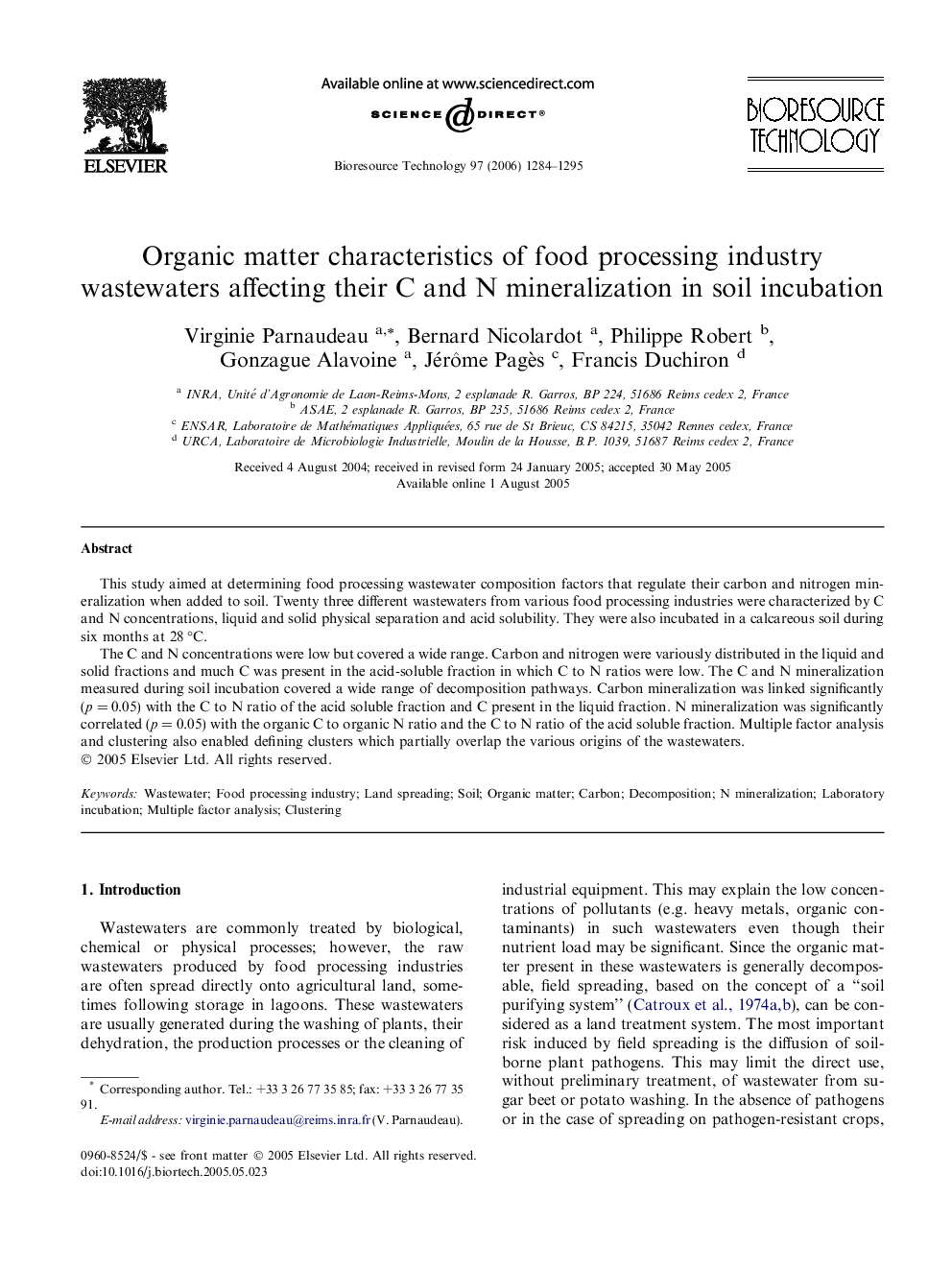| Article ID | Journal | Published Year | Pages | File Type |
|---|---|---|---|---|
| 685924 | Bioresource Technology | 2006 | 12 Pages |
This study aimed at determining food processing wastewater composition factors that regulate their carbon and nitrogen mineralization when added to soil. Twenty three different wastewaters from various food processing industries were characterized by C and N concentrations, liquid and solid physical separation and acid solubility. They were also incubated in a calcareous soil during six months at 28 °C.The C and N concentrations were low but covered a wide range. Carbon and nitrogen were variously distributed in the liquid and solid fractions and much C was present in the acid-soluble fraction in which C to N ratios were low. The C and N mineralization measured during soil incubation covered a wide range of decomposition pathways. Carbon mineralization was linked significantly (p = 0.05) with the C to N ratio of the acid soluble fraction and C present in the liquid fraction. N mineralization was significantly correlated (p = 0.05) with the organic C to organic N ratio and the C to N ratio of the acid soluble fraction. Multiple factor analysis and clustering also enabled defining clusters which partially overlap the various origins of the wastewaters.
